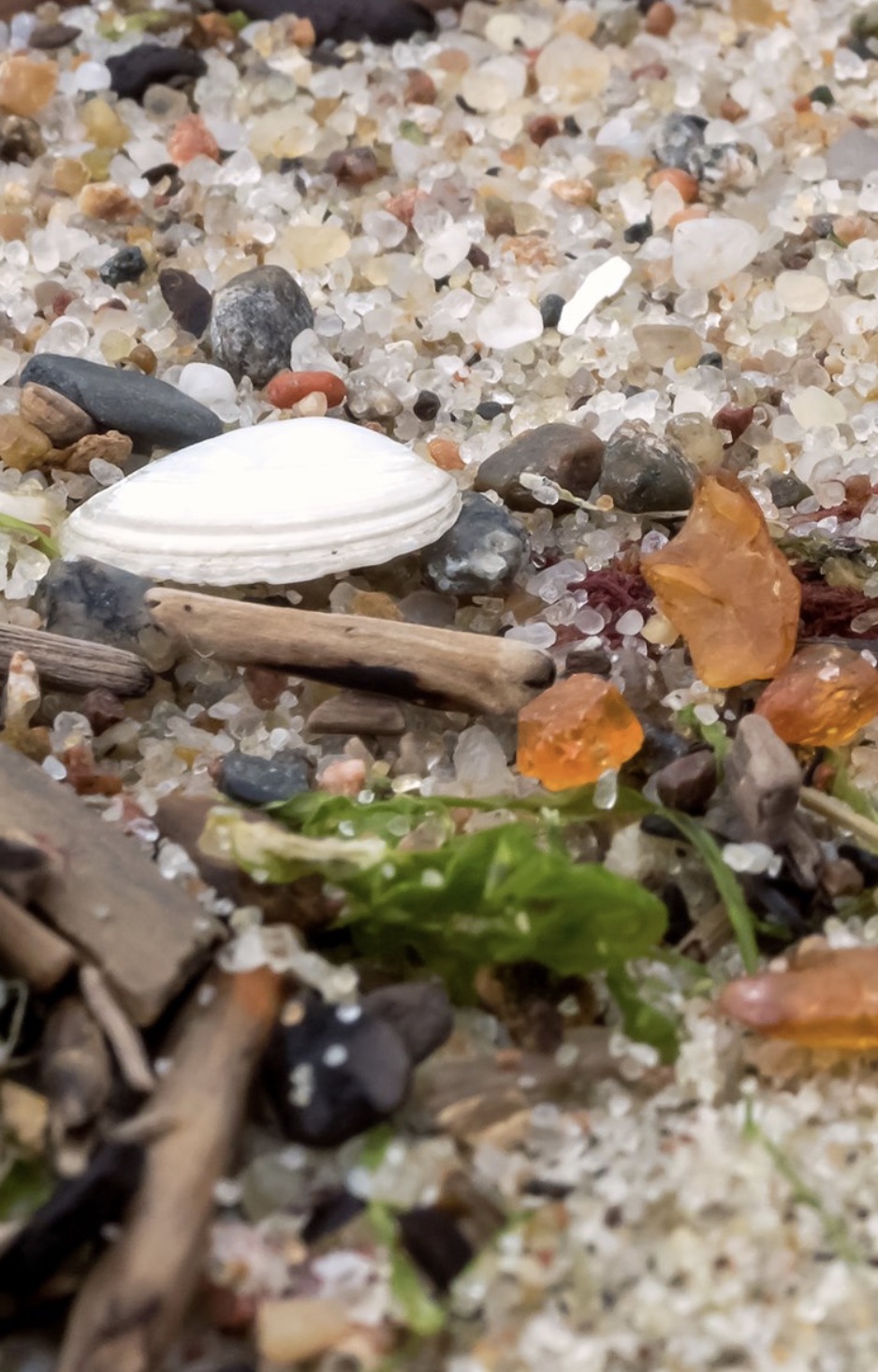Amber

Looking for amber – insider tips
What is amber?
Amber (Danish ” Rav”) comes from huge forests spread across large parts of what is now Northern Europe 55 to 35 million years ago.
Tree resin drips onto the forest floor, where after several thousand years it hardened and turned into amber. Sea, rivers and ice from the Ice Ages have transported it far and wide – the amber is spread over a huge area – from England in the west to Russia and Ukraine in the east.
The largest deposits of amber are today at the West coast of Jutland and at the Baltic coast of the Baltic countries .
Insider tips for amberhunt
UV light ?
UV light causes the biological microorganisms in the amber to fluoresce and light up in the dark. No fossils other than amber will light up. It is easier to see the amber hidden among seaweed etc. on the beach with UV. We recommend buying a pair of UV protection glasses, so that the eyes are a little less strained.
Personally we prefer to find amber during the day without UV light – being able to enjoy the scenery at the ocean.
Where to look?
Many people think that it is found among the stones on the beach, but you will rarely find amber there. If you do, it’s in lumps of several pounds.
Amber washes up on the beach along with seaweed and shells. Look carefully for algae with chopsticks, yellow mushrooms, pieces of charcoal, and other goodies. Another tip is to keep an eye on where the seagulls dive for food, that is a very good amber sign.
During storm or after ?
The best time to go looking for amber is when there has just been a strong storm. Amber is usually stored well under the sand and can only be cleared by a severe storm. However, amber is rarely found while the storm is raging. You have to wait for the wind to subside. This is when the chance of finding amber is greatest, and the amber is often in the top layer of the wash up on the beach.




Insider tips for amberhunt
Winter or summer?
The amber season lasts between autumn and spring. The winter months are best. This is where the chance of finding amber is the best as the cold sea generally provides the best conditions for carrying the amber to the beach. This is also related to the density of the water. during this time the amber is relatively lighter and loosens from the sea floor. Additionally, there are fewer people on the beach during the winter months, so you don’t have as many competitors.
Any precautions?
There are some simple safety precautions that you should follow when hunting amber. If you are really unlucky you run the risk of collecting phosphorus instead of amber. The two materials can be similar to each other, but phosphorus is toxic and highly flammable. Its is flammable at 30-40 degree when drying and getting oxygen (typically in your pocket). This is why it is always a good idea to have a glass or metal container for your treasures and never bite amber. Better safe than sorry. Phosphorus comes from the bombs of World War II.
Is it amber?
When searching for amber, do not pay attention to the familiar yellow-brown color. Because then you usually only get the yellow flint.
It is important to know that in nature, amber does not resemble the polished amber found in jewelry stores. Amber is available in many different colors, from black to white to blue. And it often comes in raw lumps.
A characteristic of amber is its light weight. Amber is incredibly light and has a density of only 1.01. This means that amber is only slightly heavier than water and therefore amber should never be confused with stones, which are significantly heavier. We always say if you are in doubt – it’s not amber.
You are always welcome to put your piece in our amberlamp, or just imprint how amber looks in all its shapes and colors so you can recognize it on the beach.
A saying goes “ in the beginning you take the amber – then the amber takes you” – so true…….Good luck